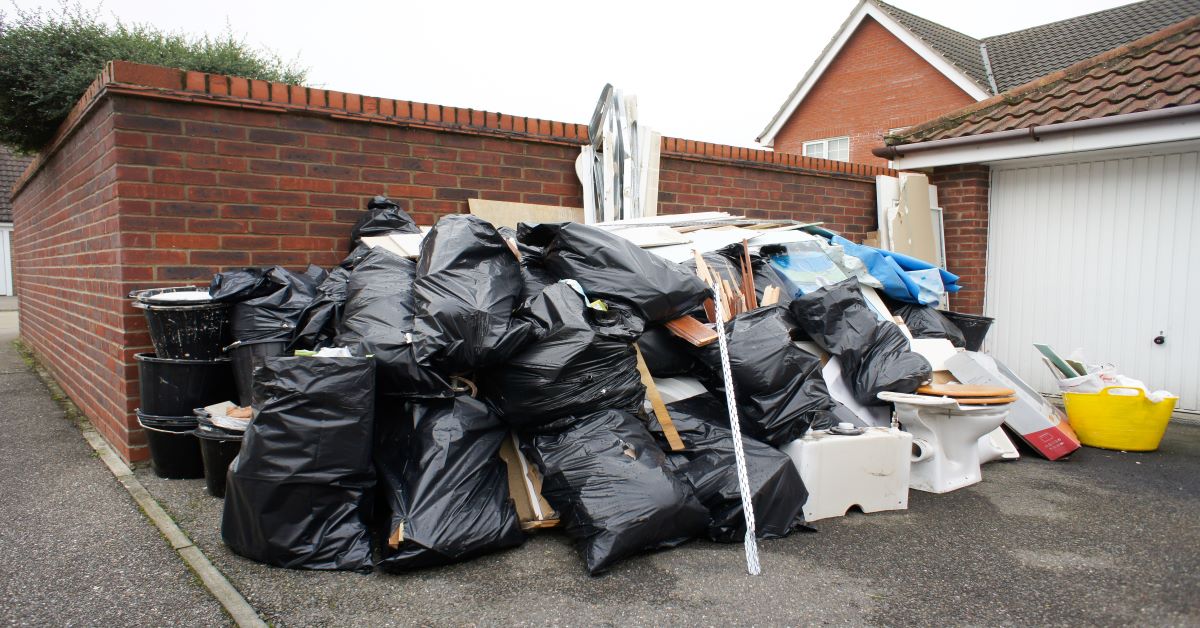Professional Waste Administration Techniques Customized for Industrial Settings
Tailoring waste administration strategies to suit the distinct requirements of commercial setups is not simply advantageous however essential for preserving functional effectiveness and ecological sustainability. The mission for improved waste administration in commercial settings includes a meticulous method that balances regulative conformity, cost-effectiveness, and eco-friendly duty.
Relevance of Tailored Waste Monitoring
Customized waste monitoring practices are vital in industrial setups to maximize resource utilization and minimize environmental effect. Industrial procedures produce a significant quantity of waste, ranging from solid byproducts to chemical toxins, posturing a threat to the atmosphere if not taken care of efficiently (Junk removal Atlanta). By customizing waste administration techniques to suit the details demands and challenges of each industrial center, business can not only follow guidelines yet also enhance operational performance and sustainability
One trick facet of customized waste monitoring is performing a thorough waste evaluation to recognize the kinds and volumes of waste produced. This analysis allows business to carry out targeted options such as recycling programs, waste partition procedures, and waste-to-energy campaigns. By understanding the make-up of their waste streams, industrial centers can develop affordable methods to reduce waste generation at the source, leading to long-term ecological benefits.

Kinds Of Hazardous Waste
What are the numerous categories of industrial waste generally produced in manufacturing processes? Industrial waste can be identified into several primary categories based on its make-up and characteristics.
Another usual kind of hazardous waste is non-hazardous waste, which encompasses products like paper, plastics, and packaging waste. While non-hazardous waste might not posture instant risks, proper monitoring is still necessary to reduce landfill usage and advertise recycling and sustainability techniques.

Contaminated Materials Handling Procedures
Effective monitoring of dangerous waste in industrial settings necessitates rigorous adherence to established taking care of procedures to mitigate risks and make sure environmental safety. Contaminated materials handling procedures involve a number of vital steps to lessen the possible impact on human health and wellness and the setting. Appropriate identification and classification of harmful waste are vital. This consists of establishing the characteristics of the waste to determine the suitable handling, storage, and disposal techniques.
Second of all, as soon as determined, dangerous waste should be meticulously set apart from non-hazardous waste to avoid contamination and make certain proper therapy. Storage space of contaminated materials must conform with laws regarding containment, labeling, and compatibility to avoid leaks, spills, or other events that might endanger employees or the environment.
Additionally, taking care of treatments must include making use of personal protective tools, worker training, and emergency action methods. Regular examinations, surveillance, and documents of hazardous waste handling activities are crucial to maintaining conformity and determining locations for renovation. By following these structured treatments carefully, industrial facilities can successfully handle contaminated materials and maintain their commitment to ecological stewardship.
Carrying Out Effective Recycling Practices

To implement efficient reusing practices, commercial centers should initially i was reading this conduct a waste audit to recognize the types and quantities of recyclable products created in their operations. Based upon this audit, firms can then establish assigned reusing terminals, provide ideal training to staff members on correct sorting strategies, and work together with trusted reusing companions for the collection and processing of materials. In addition, establishing particular recycling objectives, tracking progression, and on a regular basis communicating with personnel regarding the relevance of reusing are essential steps to ensure the success and sustainability of recycling campaigns in commercial setups.
Monitoring and Constant Improvement
To guarantee the efficiency and sustainability of waste management approaches in industrial settings, the implementation of robust surveillance and continual enhancement processes is crucial. Surveillance entails tracking key efficiency signs (KPIs) such as waste generation prices, recycling percentages, and disposal prices. Frequently analyzing these metrics permits companies to identify areas for renovation and measure the success of applied waste monitoring campaigns.
Constant enhancement is necessary for fine-tuning procedures over time. It involves examining keeping track of data, recognizing inefficiencies, and implementing modifications to enhance waste monitoring practices even more. This repetitive strategy cultivates a culture of recurring improvement and technology within the company.
Making use of technology like this content waste tracking software application and IoT sensors can simplify keeping track of initiatives, providing real-time information for informed decision-making. Employee training and interaction also play an important role in making certain the success of surveillance and continuous renovation campaigns, as frontline staff are typically principals in waste administration processes.
Final Thought
Finally, customized waste monitoring strategies are vital for commercial setups to properly handle various kinds of waste, including harmful products. By carrying out reliable recycling methods and continuously surveillance and enhancing waste monitoring processes, markets can website here lessen their environmental effect and ensure compliance with policies. It is essential for firms to focus on waste administration to secure the atmosphere and promote sustainability in their procedures.
Comments on “Junk Removal Atlanta: Rapid and Cost Effective Clean-Up Providers”